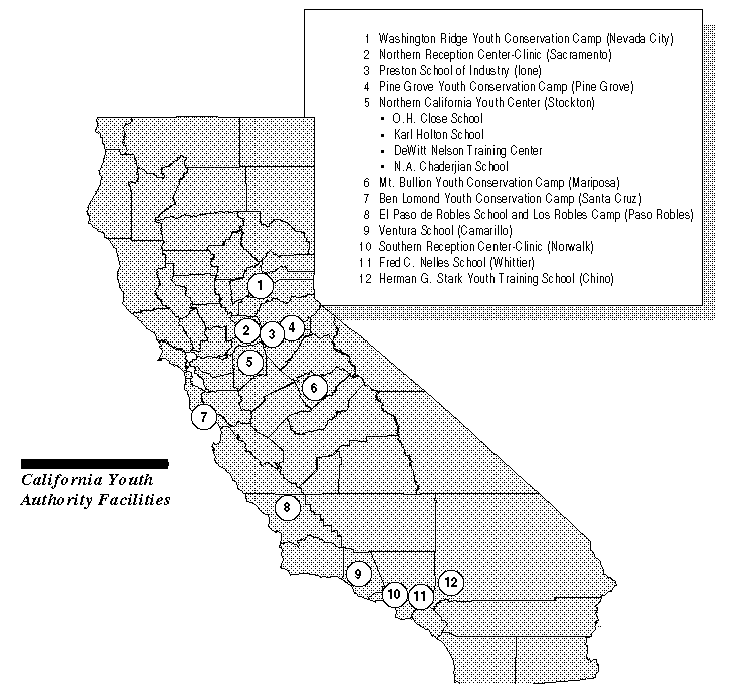
 Legislative Analyst's Office
Legislative Analyst's Office
The vast majority of criminal offenders in California are teenagers and young men in their twenties. Criminal activity declines significantly as individuals mature into their thirties. Felony arrest rates peak at age 18 for violent offenses and age 16 for property offenses. About half of all persons arrested in California in 1993 were between the ages of 11 and 24. This group, however, makes up only slightly more than 20 percent of the state s total population.

A 1987 study in California found that by the time men reached age 29, 35 percent had been arrested once (66 percent for young black men). These figures may actually be low because they do not include all juvenile records or driving-under-the-influence offenses.
Although the arrest rates for juveniles (ages 10 to 17) have consistently been higher than the arrest rates for adults over the past 20 years, they have become much closer in recent years. This is probably due in part to demographics as the juvenile population became a smaller portion of the overall state population. Nevertheless, since 1987, the rate of juvenile arrests for violent offenses increased by about 60 percent while the rate for adults increased about 20 percent. The juvenile arrest rate for property offenses increased by about 14 percent while the rate for adults declined by about 7 percent.
There is evidence that a major reason that arrest rates for juveniles are higher than for adults is that young men tend to be arrested in large groups on suspicion of committing a crime or at the scene of a crime, although charges may not ever be filed. One concern for policymakers, however, is that there is no statewide data on what happens to juveniles after they are arrested.
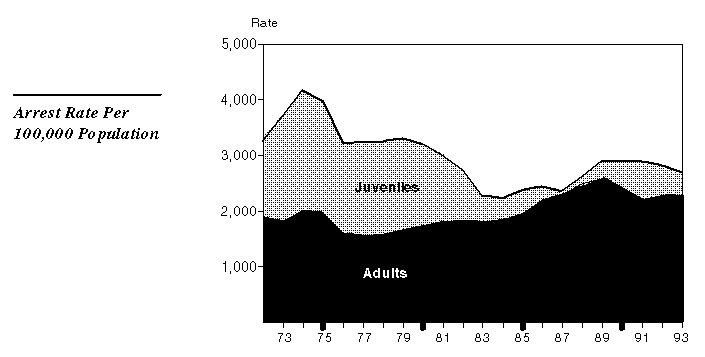
Given these demographics, it is important for policymakers to recognize that the coming boom in juvenile population that is projected to occur in the early part of the next century could result in a return to the high crime rates of the late 1970s and early 1980s.
California's criminal justice system focuses much greater attention on prevention, rehabilitation, and treatment of juvenile offenders than it does on adult offenders. Juveniles who are considered at-risk for becoming offenders generally exhibit one or more characteristics, including failure in school, family problems, and substance abuse or mental health problems. After a juvenile commits a crime and enters the criminal justice system, the juvenile may be treated very differently in each county, depending on the resources available in the county. A county may take informal or formal actions, including various types of treatment and supervision.
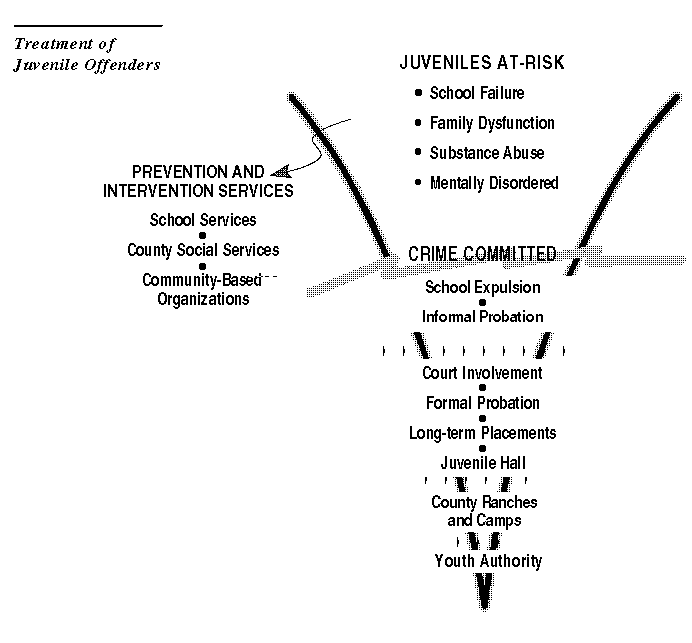
Juvenile offenders are generally placed in one of four categories depending primarily on the seriousness of the offense committed.
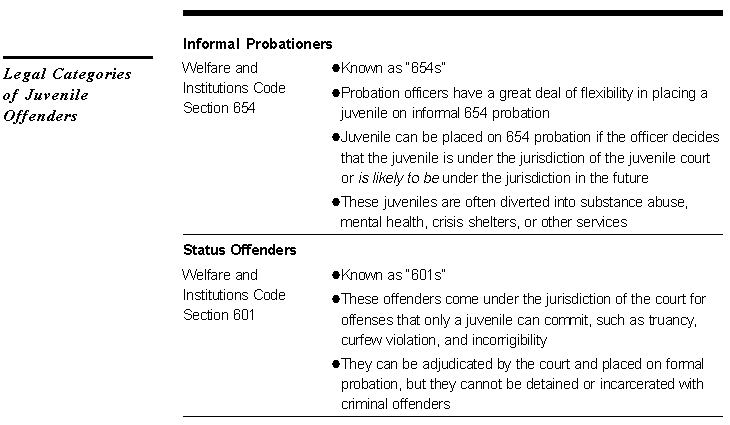
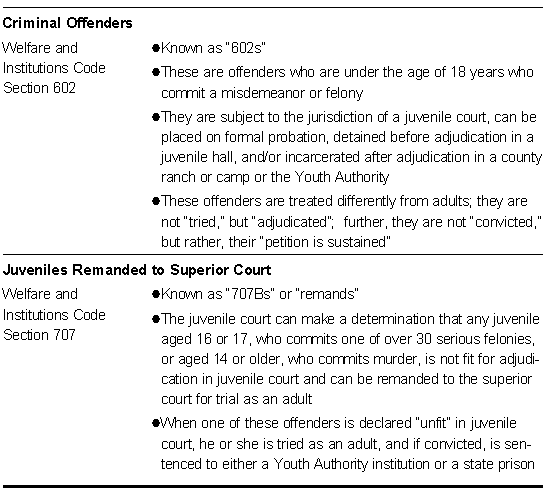
County probation departments supervise 97 percent of all juvenile offenders; the remaining 3 percent are committed to the Youth Authority and become a state responsibility. Offenders placed in county custody are generally the responsibility of the county probation department and are placed either on probation at home, in a county juvenile camp or ranch, or a foster care or group home.
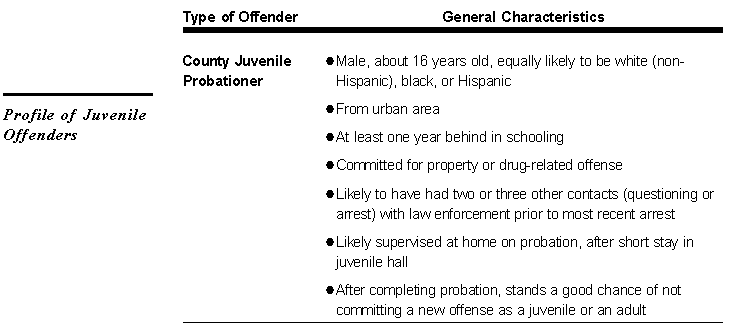
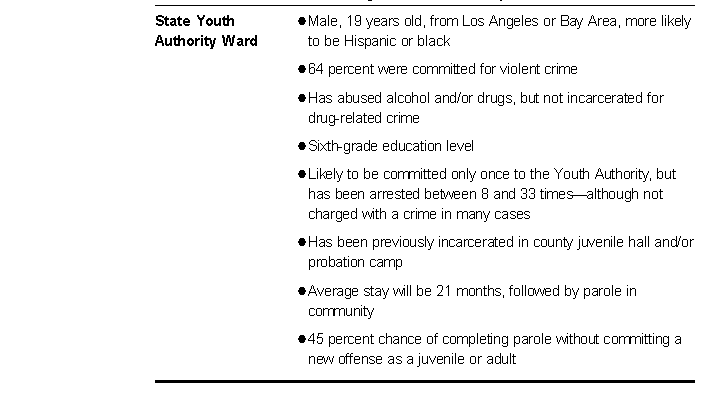
The state s role in the juvenile justice system is limited primarily to the Youth Authority, which operates institutions, camps, and parole offices. Currently, there are about 9,000 Youth Authority wards. That number is projected to increase to about 10,000 wards by the end of the decade. The average annual cost to supervise a ward in the Youth Authority is about $32,000.
